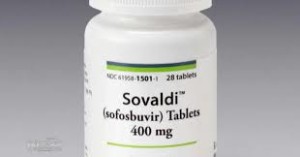Over 500,000 Americans had medication costs in excess of $50,000 per year! That is more than double the number from the year before. Most of those are patients with severe disease getting specialty medications, such as chemotherapy drugs and drugs for hepatitis. Health insurance paid for most of those medications, meaning that the costs came out of premiums that you pay.

Take Sovaldi (sofosbuvir), the pill to treat hepatitis C , that costs $84,000 for a 12-week course, or about $1000 per pill. Why is that price so high?
When considering that the CDC states that there were 30,000 new cases of acute hepatitis C in 2013, and potentially 3.2 million chronic cases of hepatitis C, the budget required to treat patients racks up into billions of dollars.
The manufacturer, Gilead, contends the price is similar to other treatments, that it has less side effects, and cures more people than the current treatments – and thus it will save money. In other words, Gilead is justifying their price based on what they think the market will bear.
However, Gilead will license companies in India to make Sovaldi and the price there will be about $1000 for twelve weeks of treatments – compared to $84,000 in the United States. Giliead might make similar arrangements for other low income countries – as many as six of them.
So why are we paying more? Is the U.S. paying for the research and development of this drug? It turns out we are not. The standard argument is that high drug prices pay for the research and development costs of the drugs. The expensive FDA tests required in order to prove toxicity, efficacy, and safety. But it turns out that of the major big pharmaceutical firms, they spend more of their budget marketing than they do for research and development. We discussed this in our post Big Pharma Direct to consumer marketing is unethical. Drugs that are on patent in the US but not in Canada, such as Crestor. In Canada a one month supply will cost $40 and in the United States it will cost almost $200. The cost of drug development is long past.
The ability to negotiate with drug companies is something done in many countries, but not done in the United States. It is time to change that or we will drown in medical debt while pharmaceuticals rape the nation.
